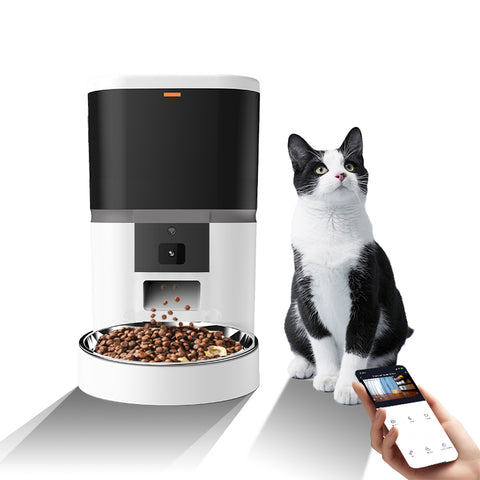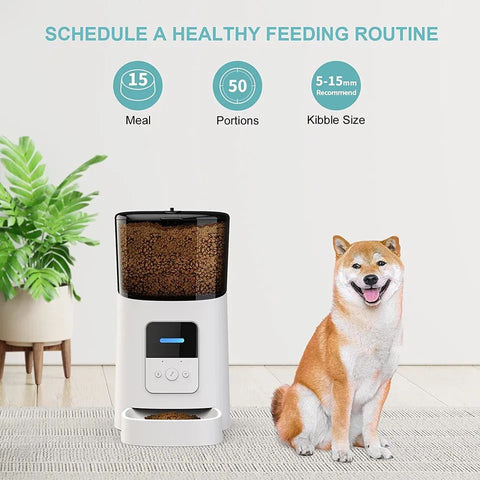
How to train pet cats and dogs?
How to train pet cats and dogs?
"Domesticate" means to raise and submit a pet, that is, to make a pet obedient, it must first be raised well. If the owner does not usually care about the pet, the daily feeding is not active, and the pet is often hungry and full, it is difficult to make the pet obey. Although animals are different from people, they are also human, and if the master is not good to them, they will naturally not be close to the master. Moreover, the training of pets also has certain principles, not the owner wants to call the pet to do what, but also consider the pet's own physiological conditions and psychological acceptance.
First, the principles of pet training
1, To name the pet to let the pet understand the owner is calling it, it is necessary to first give it a name, and often call its name in daily life, so that the pet can listen to it, and then every time it calls its name, the pet can produce a conditioned reaction. The pet's name does not need to be too complicated, simple two or three words on the line, as far as possible to be catchy, so that it is also easy for the pet to hear clearly.
2, the training command is short and consistent when training pets, the training command is a very critical part of the training, because it is directly related to the training results. The pet brain can not decompose too long language, so when training, the owner is best to issue a short command, such as "sit", "come", "NO", etc., a few words are easier to be received by the pet. In fact, pets are very good at observing the emotions of their owners, and if they can feel the emotions of their owners, they can naturally respond in time. Of course, the password should not only be brief, but also be consistent in the same training, you can not issue this password today, and issue another password when training tomorrow, because the pet's memory itself is relatively weak, only repeated reinforcement can let it remember the training content, and the password is inconsistent is easy to form interference. In the training process, the owner should not yell, this behavior is not good for pet training, but will make the pet feel afraid, resulting in it is not willing to cooperate with the training. Pet training is not owner-led, but should put the pet in the center, according to its state of training, rather than forcing it to cooperate with training.

3, timely reward reward for pets is a part of strengthening emotions, when it performs very well in training, if the owner gives it a reward, it will be easier to remember the current behavior, and will do better in order to get the reward, so reward is also an indispensable part of the pet training process. And the timing of this reward is also important, because pets have a short memory, if the owner does not reward the pet immediately when it performs well, but waits until the training is over or it is unwilling to cooperate with the training and then rewards it, the pet will not remember its good behavior, but only remember its behavior when it was rewarded. Therefore, the owner must give the pet a reward immediately when it performs well, so that it remembers the training content. The reward for the pet can be a small toy or a small snack it likes, whatever it is, it must be something it likes. The snack reward for pets is best for pets, because human snacks are not suitable for pets, and eating too much is easy to get fat. Willot chicken freeze-dried snack is specially designed for dogs and cats a snack, not only can let dogs and cats satisfy their cravings, but also rich in a variety of nutrients, can let dogs and cats eat snacks at the same time supplement nutrition, very healthy.
4, timely correction of wrong behavior In the process of training pets, pets will inevitably make some wrong behavior, or do not obey, the owner should also punish it in time. Of course, the punishment here is not a punch or a kick, but a proper reprimand, or showing that you are angry. When reprimanding the pet, the owner should not abuse it, nor long, endless, try to say some short statements, such as "NO", "don't" and so on. If the pet can correct in time, the owner can also give it a small snack as a reward. Or praise it, stroke its head, but this kind of praise do not often hang on the mouth, otherwise the pet will feel nothing unusual.
Second ,pet daily training
1, Sit training pet "sit", the owner can choose "sit", "sit" and other passwords, but only choose one, and do not change at will. The owner can first walk to the pet, then put a small piece of the snack on the tip of its nose, and issue a "sit" command, slowly move the small snack to its head, and wait for its butt to sit down, the owner can give it the small snack to eat. During repeated training, the owner can give the command several times, and as long as the dog responds, it can be rewarded.
2, handshake in the training of the pet "handshake", first let the pet sit down, and then the owner can reach out and issue the "handshake" command. While the pet may not understand at first, the owner can help it place a paw in its hand, then praise it and give it a reward. After a lot of training, the pet can quickly understand the meaning of the owner. If the pet has been unable to understand the training content, the owner should not urge it, but should consider whether there is a problem with its PAWS, and the general pet with uncomfortable PAWS is not willing to extend its PAWS. If there is no problem with the pet's PAWS, the owner should patiently train it several times, or choose a time when the pet is hungry to train, so that the training effect can be more achieved.
3, fixed point peeing and peeing training is very necessary, because this can avoid the pet to make a mess of the house, everywhere is its feces and urine smell. Before training, the owner must also know some of the pet's excretion habits. Take the dog for example, the dog generally will not eat and sleep in their own place, so the toilet arranged for the dog must be away from these two places. Before the dog excretes, there will be a circular behavior, it is likely to sniff around, at this time the owner should guide it to go to the toilet.
When training the dog to defecate, the owner should not easily change the toilet for the dog, otherwise the dog is likely to be unable to find the toilet when it wants to defecate, resulting in it finding a place to defecate. When the owner sees that the dog wants to defecate, he can guide it to the toilet, and if the dog goes in and defecates, the owner can give it a small snack as a reward.
If the owner finds that the dog wants to defecate in a place other than the toilet, stop it in time and guide it to the toilet. But if the dog has been pulled out, the owner must take the dog away from the scene in time, and then clean up its waste, even the smell can not be left, because the dog smell the smell is likely to be excreted in this place next time.
